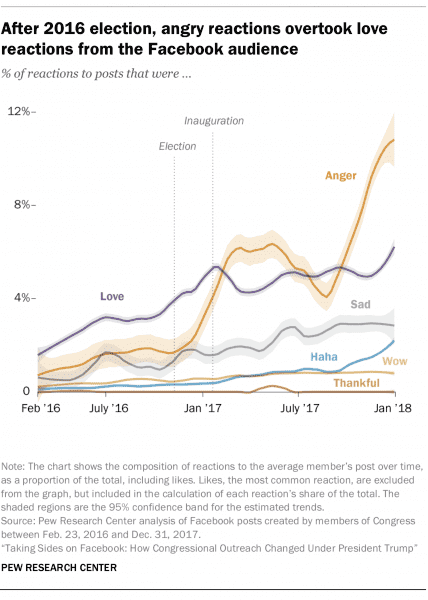
“Like,” the default option on Facebook, is still the most common reaction. But Pew left it out of the chart to compare the less neutral reactions.
The rise in rage is being felt by members of both parties. Pew noted: “Prior to the election (but after the ‘angry’ feature was released), just 1% of all reactions to posts by Democrats were angry. After the election, that share increased to 5%, on average. Among Republicans, the share of angry reactions increased from 2% before the election to 6% after.”
Much of this, unsurprisingly, is about Trump, according to Pew: “Posts that expressed opposition to Trump received an estimated five times as many angry reactions as posts that did not express support or opposition toward any figure or group. When Democrats expressed opposition to Republicans, they earned six times as many angry reactions, on average.”
And with Trump in office, Democrats are posting a lot of opposition on Facebook — with 30 percent of the average Democratic congressional member’s posts in 2017 showcasing “some form of opposition toward Trump, Republicans or both.”
One question here is what people’s angry reactions on Facebook are actually meant to convey. Someone could click “angry,” for example, if she disagrees with the Congress member’s opposition to Trump, or she could hit “angry” to show she shares the Congress member’s strong opposition to the president.
Regardless, people are angrier — or at least more likely to express that anger on Facebook.
Sourse: vox.com





